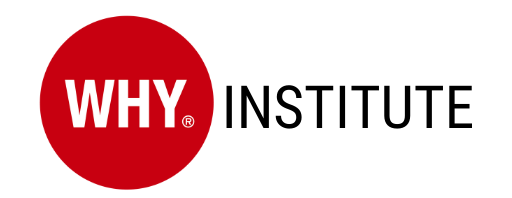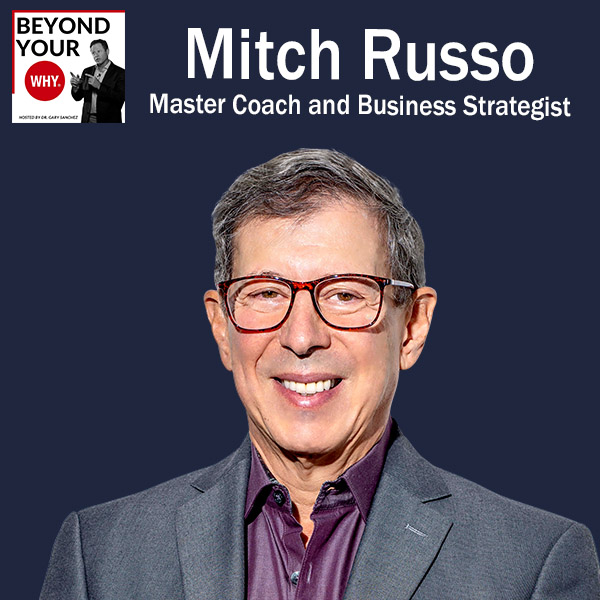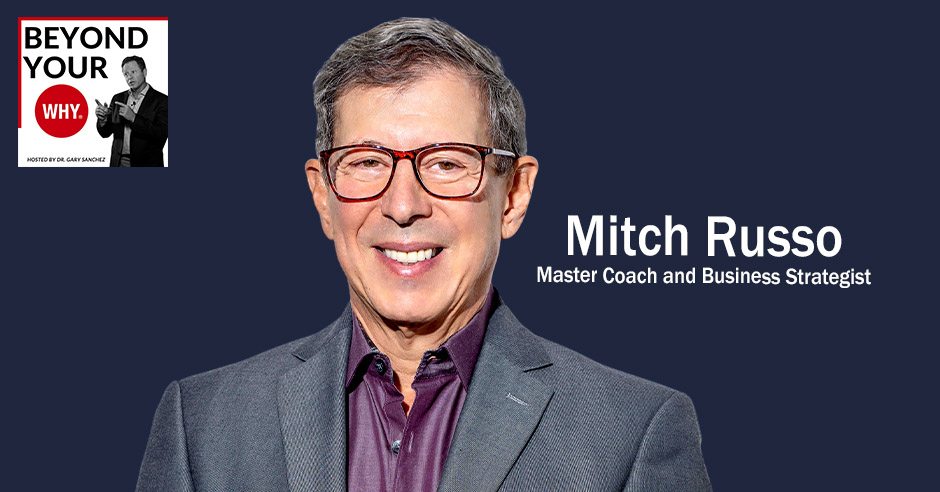
Do you want to take your coaching program to the next level? Mitch Russo joins us again with his latest book, Coach Elevation: The Step-by-Step Guide to Elevating Coaching Sessions To Improve Results, Elevate Your Brand and Create Prosperity. Mitch is responsible for the SaaS platform ClientFol.io, designed to manage your entire coaching company as a single or group of coaches. In this episode, he chats with Dr. Gary Sanchez about how you can use these tools to elevate and improve your program. Beyond that, the two also discuss Mitch’s WHY of Better Way and the importance of understanding your purpose before pursuing any venture. Tune in for more meaningful lessons and practical insights.
—
Watch the episode here
Listen to the podcast here
Coach Elevation And The WHY Of Better Way With Mitch Russo
In this episode, we’re going to be talking about the why in a better way, to find a better way in sharing. If this is your WHY, then you are the ultimate innovator. You are constantly seeking better ways to do everything. You find yourself wanting to improve virtually anything by finding a way to make it. You also desire to share your improvement with the world. You constantly ask yourself questions like, “What if we tried this differently? What if we did this another way? How can we make this better?” You contribute to the world with better processes and systems while operating under the motto. I’m often pleased but never satisfied.
You are excellent at associating, which means that you are adept at always taking ideas or systems from one industry or discipline and applying them to another with the ultimate goal of improving something. In this episode, I’ve got a great guess for you. I’ve had Mitch on before and the last time we talked, he was in the process of making some cool software and writing a book and so I thought it would be perfect for our audience. Here is Mitch’s bio.
Mitch Russo started a software company in his garage, sold it for eight figures, then went on to build a company to over $25 million with Tony Robbins and Chet Holmes, nominated twice for Inc Magazine, Entrepreneur of the Year. Mitch’s book, Power Tribes: How Certification Can Explode Your Business, helps readers create new business divisions using high-performance certification programs. His software for coaches, Clientfol.io, fills a void in the coaching software marketplace by helping coaches make their clients more productive with goal tracking and accountability. Mitch’s newest book, Coach Elevation, blueprints his process for helping clients find their true purpose and connect that to their true mission, which accelerates progress in both business and life. Mitch, welcome back to the show.
Thank you, Gary. It’s great to be back. I love continued conversations.
The last time we left off, you’d already done a whole heck of a lot of stuff, and we could go on and on about your bio, which we did last time. Since then, you’ve now launched a software program. You’ve written another book. Dive in. Which one would you like to talk about first?
I’ll talk about the origin and why I decided to create this software product. What was happening is after my Power Tribes book came out in 2018, my life got very busy. I started building a lot of certification programs. People read the book. They got excited about building their own and I started creating more programs for people, which is always fun to do. What started to also happen is that my coaching business started to grow. What I found is that it was time for me to put my big boy pants on and buy some software that manages a coaching business.
I basically went around and I did surveys to see what products were out there. I tried five different products, each with big promises. I found them to be woefully inadequate for my needs. I’m sure they’re good products in every other way but for my needs, which was basically easy to learn, easy to use, low cost but still very powerful around goal setting and accountability tracking. A lot of my success with my clients comes from holding them accountable.
Instead of saying, “Accountability could be easy. Let’s ask them how they’re doing.” That’s not accountability. We get very granular. In fact, we set numeric goals with every client, usually up to six. We track those goals sometimes every day. We put them into a dashboard and then we create graphs and chart to show people the progress they’re making. In fact, this became so popular that we extended the software and created a portal for our clients to log in, enter their own data and see their own graphics and charts so they could see what was going on all at once.
I started this project in 2019. It came to life with its very first version in 2021. Since then, it’s had two major revisions. In the last revision, I started to realize that I was using a process. Almost unconsciously, I’ve been using the same process for the last five or six years. I’ve refined it since I discovered the WHY Discovery. The WHY Discovery, for me, was the missing component to make this whole thing work.
It started to become such a big part of what I did with the client that I decided to explain everything in a book. I wrote a new book. It’s called Coach Elevation. The book itself is a blueprint about how to successfully run a coaching session with the purpose of discovering a client’s true purpose, connecting that through their WHY Discovery to their true mission. Now, what does this do? What this does is it changes the nature of the engagement.
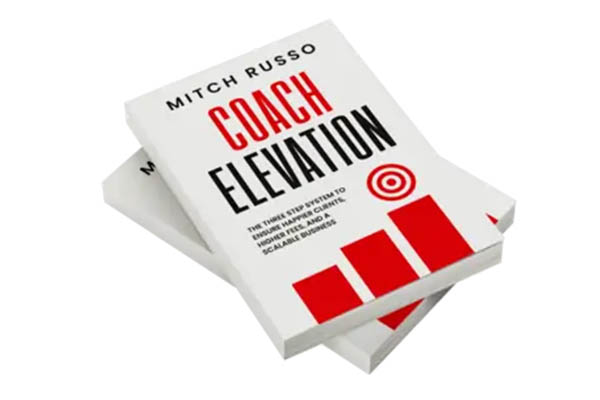
Number one, it emotionally opens a person very quickly. I did the first session with a new certification client. She broke into tears 25-30 minutes into the session because, for the first time, she felt what her true mission was. Later, as we took this a little bit further and she told me what her why was because I had her take the discovery before. Now all of a sudden, it was very clear what her entire business was dedicated to doing. Before that, it was an enterprise. Now it is a life mission. It changes everything. She’ll move faster, work harder, be more successful and be more motivated to finally get that done. That’s what I’ve been up to, Gary.
Let’s go back for a minute. When you say your coaching business took off, who do you coach? Who’s your ideal coaching client? What clients are you talking about?
With certification, I coach SaaS companies. I coach training companies and other coaching companies as well. The whole idea is they have intellectual property that they are able to create a transformation in others. The thing is that if you could show someone else how to create that same transformation, then in effect, what you’re doing is you’re creating a scalable license model that will allow somebody to take this information, teach it to others and help them get clients and hare in the upside or the revenue that comes from those clients. We certify them in that process.
What that means is that when I work with the certification client, what I’m doing is I start with the process I described earlier, which makes everything go much easier. At that point, we’re building a business plan around the idea that we’re going to have a certified coach or a certified consultant network. From there, we build out the marketing system for that, then the sales system for that. We start to create the infrastructure on how we bring through students, if you will, into the system, into the pilot. We call it a pilot, the very first one.
We train them and we get them to be successful. We work with them one on one. We even engage with them while they’re working with clients to make sure that that first batch of graduates has business success and rapidly. The reason we do that is because what we want to do is we want to take those testimonials and we want to bring the next group through. That’s how we do it. It’s the early adopter rule. The tip of the triangle, tip of the pyramid. The early adopters go first and then once they get results and those results can be shown to others, now everybody wants to do it. That’s the theory behind the way we do this.
Your ideal client will be a coach or coach organization that has a process that they want to help other coaches use to better serve their clients.
Right, but there’s a wrinkle here. The wrinkle is what we want to do is we want to create a recurring revenue model on several levels. Before, you could buy coach certification from one of many very smart famous coaches and you’ll pay anywhere from $5,000 to $18,000 for that certification. What you generally get is a beautiful 8×10 certificate that’s suitable for framing right behind you on your Zoom window but generates no money.
Here’s what we know about coaches. We know coaches love to coach. They’re smart people, empathetic people, but they’re lousy salespeople. They’re sometimes not very good at marketing themselves. They may be good at helping others market, but they’re not very good at marketing themselves. We take over. When I say we, I mean the company that I’m consulting with. We build a marketing and selling system for the people that they certify. Now, what does that do? Number one, it puts enough revenue in their pocket, so we’re usually delivering between a 6X and 12X ROI on what they paid for certification year after year. That’s one stream of recurring revenue.
[bctt tweet=”We know coaches love to coach. They’re smart people, they’re empathetic people, but they’re lousy sales people.” username=”whyinstitute”]
How do you build a marketing and selling system? What does that look like? Give us an example of something what that would be like.
Let’s take the average company and we’ll use your company, for example. Let’s say that you have a database of email addresses and names. Let’s say a percentage of those people are actual customers who paid you money. I’m going to guess it’s somewhere hovering between 5% and 8% of your database has paid you money, which means somewhere between 95% and 92% of those folks have not paid you money. Nonetheless, they seem to be resistive to all your charms and all your wonderful emails and all your videos.
What do we have? We have people who know you, who probably like you and even trust you but they still haven’t made a decision to work with you. Now what we do is we train people to do what you do, to duplicate your transformation, the ability that you have to transform another human being or particularly a corporation in this case. Once we teach them how to do that, we then build a business model that says, “We’re going to share our prospects with you. We’re going to put that inside of a CRM system and we’re going to give you access to that CRM system. In fact, we’re even going to create all the emails for you. All you got to do is sit down every morning and basically run the system with the new leads that you received.”
If you do this, then the system will start to make offers to the prospects, but a better offer than before. Here’s what the better offer looks like. Bob, you probably remember when Gary offered you the WHY Discovery and you loved it. You thought it was great, but for some reason, you didn’t pull the trigger. I am a WHY Discovery coach. My job is to make sure that when you take your WHY Discovery, I work with you one-on-one for free to see and make sure that you implement this into your life and get everything that we intended when we created this amazing tool.
If you like, we can offer you a small discount or we could set you up with a free call after you take the discovery. We could explore how this can benefit you, build your business, and grow your relationships in ways you never thought possible. That’s better than the offer you made over the past several years. Why? It’s because a live coach is willing to do this for free. Why would the coach be willing to do that for free? I think it’s an obvious answer. They’re looking to build relationships. They want to start working with people they haven’t worked with before so that they can help them in their lives.
Our statistics show that about 25% of the people who get a free or a few free coaching sessions will then go on to buy coaching because they found it to be so valuable that they don’t want to give up their coach. If that coach has any form of a personality at all and has a lot more to offer than what was offered for free, there’s a good chance that business relationships can go on for many years. It can involve the base company too. Meaning they can involve you are the WHY Institute and why? There are so many other things WHY Institute offers.
That coach can also have those as part of what they offer so they can get a commission. That’s another recurring revenue stream on whatever they sell their coaching client. They can earn money on the coaching itself and they can even share that money with the company because the company gets to set this up. The third thing is that in 2023, we bring them into a big room called the Symposium and we do a three-day rah-rah event and we reveal some new tools and get them all excited.
When they go out for the next 90 days, you’re going to see a huge bump in revenue coming from new sales and they pay for that as well. All of these recurring revenue streams start to stack up. By the end of the third year, you’re typically dealing with several million dollars of profits from a certification program if it’s done right and if it’s done with the proper scale. That is what my book is about. That is what I consult on.
That is why I needed software to help me make sure that when somebody engages with me. I’ll be honest, Gary, it’s not cheap. When someone engages with me, I have to make sure that they get the ROI on what they paid me. The only way I can do that is if I hold them accountable. I don’t mean casual accountability. As I said earlier, I want numeric accountability. I want to know how many prospects came in this week. I want to know what they did specifically to cause that and can we duplicate that next week? That’s what my goal is. That’s the software I could not find. That’s why I had to build it.
You went out, tried out five or so different other software looking for what you needed to be able to get that accountability. It didn’t exist, said, “I’m going to make my own something that I would do as I’ve done myself. It’s a better way thing.” For those people that are reading that are trying to do something similar. How the heck did you go do it yourself? What was that like for you?
For me, it’s something I always do. Gary, you’re the same way. I start things all the time and I get excited about things. My challenge sometimes is staying focused long enough to see it through to fruition. When I started this project, it was back in 2019 and I had a serviceable beta about a year later. At that point, I showed it to some people. I gave away a few seats for them to try. The enthusiasm was so dramatic that I was motivated to keep going.
I started by building a great team. That was step one for me. I needed a great team in order to create the product. I already knew the right people and I was able to put this team together. I put this team together for the long haul. This wasn’t like a contract job you pick up on Guru.com or something. This was a real team that I knew I would be able to stay with or they would be able to stay with me over the long run and bring this product to fruition and so far, we’re our third year together. We’re doing great.
The team is incredibly brilliant. Part of what I offer is I want them to participate. I build participation and for them as well. What that does is it energizes them to want to do better. My job at this point is to use my network organically to market the product first while improving it. It took months to get it to the point where it is now. As it improves, as it gets better, I use my organic network to do that. We’re about to launch a fairly sizable paid ad program because now I think we have traction at this point. It’s time to start taking advantage of that. You don’t want to let that slip away when you hit that inflection point.
Tell everybody again the name of the software and what it does differently than everybody else.
The name of the product is called ClientFol.io. I was trying to be cool like the cool kids. I said, “That’s why I picked the IO extension.” You could also go to GetClientFolio.com if you forget the IO thing. There are two URLs. Either one works and takes you to the same place. When I looked at all the other products, what I discovered is I started by watching hours of training videos.
I don’t think of myself as having a super long attention span doing things I don’t like. I have a good attention span doing things I love, but when it comes to things I don’t like, not so much. I was sitting there trying to s slug through these videos and I couldn’t handle it. I hated it. Here I am trying to figure this out and I finally power up the software after studying videos for two or three days. I load my client list.
The first thing it did, which was super embarrassing and difficult for me, was it started sending emails to my clients without me authorizing that. Immediately, I completely shut the thing down. I said, “This got to go. I can’t deal with this.” I tried another one. The other one I tried was what I would call a kitchen sink product. It had every possible imaginable component that someday you ever might want. It was like $395 a month to use, which I thought was outrageous. Even though I could afford it, that’s not the problem. I also now realize that I’m going to have to learn all of this stuff that I probably won’t need or want. I put that one aside.
I tried one of these other very low-cost ones that were even cheaper than what we were offering our product for. We only sell it for $29.97 per month. I found products that were cheaper than that. When I powered them up and started to use them, what I noticed was that they were what I would call lead magnets. You would start using it and as soon as you got the three clients, it would want to hit you up another $30 or $40 a month. When you got the seven clients, it wanted another $20 or $30 a month. I realized from the beginning that we needed to create a model that was unlimited clients.
Anybody who signs up for $29.97 a month, if they’re a coach, they get unlimited clients. We don’t work along those lines. We have optional added functionality that costs extra if you need it. If you don’t need it, you don’t pay for it. The bottom line is you don’t need it if you’re a coach. If you’re coaching clients one on one, then everything you need is right there. What we believe is the distinctive and discerning factor is the fact that it’s easy to use.

It takes about 20 to 30 minutes to learn the system, number one. Number two, once you start using it, it contains everything. All of your homework information is in there. All your notes and your Zoom links are there. All of your Q&A with clients is there. The client portal, which is an extension of the software, allows your clients to log in and get their own homework.
Answer their own accountability questions, fill in their goals and stats and even ask their coach questions, which I found to be powerful. Why? It’s because otherwise, it would go through email. If I wait for the weekend, I’m coming home to 300 or 400 emails and might lose an important question from a client. I don’t want that to happen. We built an internal communication system right into the software that has worked well for my clients.
The ultimate goal here is to have an amazing client interaction and experience accountability. Keep it all in one place so that you, as the coach because there are a lot of coaches that read this. The coach can perform at the highest level.
Yes, we’re elevating the session. We’re taking what used to be sometimes a relatively scrappy session. Even though the coach might be amazing, they have a notepad open here. They have a spreadsheet open there. If they use spreadsheets, they have another browser open for something else or maybe they’re trying to figure out how to get their next appointment from another browser window. Who knows? Another popup of sorts.
What we tried to do is we tried to put everything into one browser window so that the coach can focus only on their client during their session and take casual notes while they’re talking. At the same time, as soon as the session is over, they get to touch up those notes. Maybe make them more attractive with underlying and numbering and bullet points. Whatever they want. When they’re done, they click send homework now, save the session and they’re done until the next week or the next time they meet with that client.
Sounds like a better way.
I think you’re right.
If you’re reading and you know that Mitch’s why is to find a better way, then you know what he’s come up with has to be better. If something’s not better, Mitch, can you talk about it?
I sure can.
If someone wants you to sell a product for them and it’s not better than what’s already there. Are you able to talk about it? Do you want to sell something like that?
I don’t. It doesn’t interest me at all. That’s part of what I went through when I was doing my own exploration into trying to find a coaching tool for my own business. I couldn’t stand using inferior products, no matter how much they cost. Even if it was free, I couldn’t deal with it because I knew it was not good enough. As you said in the intro, I needed at least good enough and I wanted better.
It’s not that you set out to say, “I’ve got to make some software. I’ve got to go spend the next three years figuring out how to do this.” That probably was not high on your list, but when you can’t find it and know you can make it better, it’s almost like you’re compelled to do that.
Yes. Now, this might be a form of mental illness, Gary. I admit to that, but yet, here I am. I get obsessed with stuff once I realize I’m on the right path and I see it working. That’s what I saw with this very early framework of a first edition. I saw it working. I immediately noticed I was saving about sixteen minutes per session. I’m doing two or three sessions per day, four days a week and I’m doing admin during what I would call my peak cognitive period of the day. If I’m sitting here doing $10 an hour work during $1,000 an hour time, I know I’m getting an ROI right away, even if no one else ever wanted to use my product. I know I was getting an ROI.
What was the motivation to write the book?
What started to happen years ago, I stumbled across this process. In the middle of one session, in particular, I started asking a series of questions that appeared to change the person’s viewpoint very quickly. It appeared to get them past the casual nonsense and go right to the heart of the matter that we were trying to figure out or discuss. I made a note of those questions. This next session I had, I said, “What the heck? I might pull those questions out and try it again,” and then I did.
What I noticed is that I had more or less the same result. What I noticed is that was a huge improvement in the ability to cut through the wasted time and non-essential information and get right to the heart of the matter. This started to happen more until I started to refine the process over time. A few years ago when we worked together and you uncovered my WHY for me in a van on the way to a hotel room or to somebody’s house. It was like a mule kick in the head for me. It was such a major shift in the way I now saw things.
I started to use the process even before you had your wide discovery itself. I started to use the process to help people identify where they were in terms of their why. Now what I was able to do was, once I understood or at least zeroed in. Maybe if it wasn’t exact, I could figure out a little bit better who they are, given their WHY. I was then able to couple that with the true purpose discovery process that I had built.
Now, at this point, we were then going to look at the business completely differently. Instead of this business being a way to make money, we now saw the business as a way to fulfill a lifelong true purpose and mission. This changes everything. On either end of the stick, sometimes, Gary, we throw the business away and start over. Other times we go into the business that it’s not ideal and we change the attitudes around what we’re doing. Maybe some of the functional activities of what we’re doing and that aligns it with our true purpose.
Once you do this, it makes everything smoother, faster and I would say, more profitable. Everything works better once people are aligned. When I worked with one organization, I did this with the CEO. He said, “You got to do this now with my team.” We did each one of them separately. They all did the WHY Discovery. They all got their results then when we aligned the group, it was hard to believe the results would happen.
It took a couple of weeks to get everything done. Once the group was aligned, there was harmony. There were no more fights, no more disagreements. Everybody realized what the goals were and the true purpose was of the entire company. Now, as you and I have talked about before, a company needs a code of ethics. It needs culture. In order to create that culture, we must basically know the why and the how of the CEO.
[bctt tweet=”A company needs a code of ethics. It needs a culture. In order to create that culture, we must basically know the why and the how of the CEO. ” username=”whyinstitute”]
We need to know the CEO because the CEO started the company. Let’s call that person the founder. If we know what the CEO’s mission and values, goals and why are, that’s when we can align the team to that. Once that alignment is done, now everything works like a well-oiled machine and allows us to get a lot more done.
How do you contrast why versus purpose?
I’m going to tell you the secret that is not a secret at all. It’s right in the book. Everybody’s true purpose is basically the same. The true purpose of most individuals is to help others. Now there may be people who say, “That’s not my purpose.” If we did the discovery process, you’d find that it is. The reason I say that is because it’s the way we’re built. It’s the human structure. The way the human mind is created is that it generates the highest level of serotonin from helping other people.
When we help others, the greatest high you could ever achieve comes from that feeling. At the highest levels of helping others, there is no better feeling. Money cannot buy a better feeling than that. If we know that in advance, what good is it? It’s no good at all. Do you know why? It’s because we didn’t emotionally connect with it. The goal of the book and the goal of the process is to connect you to this true purpose, which is to help others.
I don’t tell people in advance when I start working with them. By the way, before we get started, let me tell you a true purpose. It’s more important that they go through this process of finding it in themselves. Once they find it in themselves and they go, “Yes.” As I said, this woman broke down in tears. She’s a lifelong entrepreneur. She’s had four businesses. The reason that she became so emotional was because this was the first time. She says, “I’ve done this for 4,000 people. I’ve never done it on myself or something like it.”
She had a different process, but the whole point was that, now that she finally gets this, it truly connected who she was as having a true purpose to her mission. Which, in her case, was to help others through her. I would call her mechanism. Everybody has a mechanism for how they do this. We may have the same true purpose, but we don’t have the same mechanism. You do it your way, I do it my way, but the goal is the same.
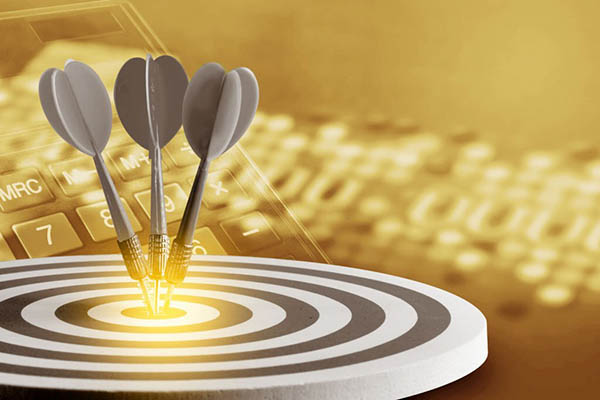
When you were to compare why versus purpose, how do you see them as being different?
Why is the component of how you get the realization of your true purpose. Whereas your true purpose is something that you must emotionally connect to first. Feel that it is real and is real to you, as real as anything else and then we use the WHY Discovery to uncover the most powerful mechanism and process that you could have to find the true mission of yourself or your company.
I love it. In your book, you outline the process for helping coaches become more successful. It’s more about coaches, hosting or working with clients. Is that more what it’s about?
It is. The book is written for coaches to work with their clients. No matter what type of clients they have, whether they’re meditation clients, business clients, it doesn’t matter. If you go through the process in the book and align your client before you start using your mechanism with them to get them to have the realization or transformation that you want them to have. They will get there faster, it will be more powerful and they will be more successful because they’re aligned, but they can’t get there truthfully.
This was the missing piece. As I said, the missing piece was the WHY Discovery. Once I got the WHY Discovery and I embedded that into this process. Now finding A, the personal mechanism every person is what their why is. That’s what my mechanism is to find a better way. It’s languaged a little differently, but without it, I can’t get to their true mission effectively.
It shortcuts everything, doesn’t it?
It does.
What’s the fun part?
What it comes down to is this, when you have an emotional experience. You connect it to something that you care deeply about, then that is something you never forget like the woman that I worked with and all the people I’ve done this with over the years. They will never forget the moment when they uncovered what their true purpose was to them and to who they were. That’s the part that makes all the difference in the world. As I said, I could tell you, “Your true purpose is you like to help people. That’s your true purpose.” It doesn’t do anything. You got to discover it.
[bctt tweet=”When you have an emotional experience and you connect it to something that you care deeply about, then that is something you never forget. ” username=”whyinstitute”]
Is true purpose different than purpose? Here are the reasons I’m asking you because, on the show, I’ve had some guests that their lifelong study is purpose. They have companies like PurposePoint and different organizations like that. When I ask them the same question I asked you, the answer that they give is interesting, which is similar but different. Maybe it is the same. I’m not quite sure but what they’ll say is that your purpose is where you live your WHY, how you choose the action that you choose to use your why to deliver.
They’re right, except the difference is that your action changes. Under that definition, my purpose can change every few years. “My purpose is to build and sell a software company for $10 million. My purpose is to build a company with Tony Robbins and sell it for $25 million.” In other words, I can have purposes all throughout my life, but the true underlying purpose is the same from the beginning of time to the end.

Perfect. That’s the distinction I wanted to make because that’s what they would say as well, which is, “You have multiple purposes. You have a purpose as a parent. Purpose as a business owner.” There’s more than one purpose, but then you are talking about your true purpose, which is overarching. Everything falls under this.
As I said, and not to repeat myself over and over again but knowing someone telling you, “Everybody’s true purpose is the same. It’s to help others,” means nothing. It doesn’t help at all. It has no meaning to most people because most people will say, “That’s not my true purpose. I know that I,” but if I took them through this process, which only takes 20 to 30 minutes to do and they connect with it, it changes everything.
It’s to be a self-discovery, say, “That is it.”
That’s right. I don’t lead them to it. Sometimes, I’m sitting there like, “You’re so close. If I give you two words, you’ll get there.” I never led them to it because that would be stealing the power of the process from them.
I love that. Mitch, if there are people that are reading now and want to learn more about what you’re doing, follow what you’re doing and connect with you, what’s the best way for them to do that?
To connect with me directly, they can go to MitchRusso360.com. All of my properties, if you will, are on that particular page. If they’d like the book, Gary, is it okay if I give your audience the book for free?
Yes. That would be great.
They can go to CoachElevation.com and get a free copy of this book. They could download a PDF of the book or they can go on Amazon. They could get it on their Kindle or if they want a hard copy like I have, they can buy it on Amazon as well.
That book is specifically for coaches that are looking for a process to help move their clients forward faster.
They use this process and it will help transform their entire business. Here’s why and this is what I teach in my program. Once you help somebody at a higher level, then what’s going to happen is your results will improve. If your results improve, you’re going to get better, stronger, more emotional testimonials. If you’re getting better, stronger emotional testimonials like you’ve never had before, you’re going to raise your prices. Once you raise your prices, you’re going to start attracting a higher-level client who’s going to pay you what you’re worth for the work that you’re doing. That’s what the book is about. It’s that entire sequence of processes that gets someone to that point.
Mitch, what’s next for you? Building the software company, is that the biggest thing on the horizon for you now?
By popular request, I’ve started a coaching cohort to take people through the process and help elevate them. My coaching cohort is starting up. It’s relatively low cost. It’s designed. It’s a short program. It’s an eight-week program. I’m going to take coaches and I’m going to elevate them. I’m going to get them to the point where they can duplicate what I do throughout my process.
Now, what I described is the first hour, a half hour or so, of my process. Honestly, it’s fantastic, but there’s so much more. What I teach in this cohort is I take them through the entire process, which you’ve seen some of with the mind mapping and with the structuring of the entire sequence of what happens after an engagement starts. That’s where the power of an organization is and that’s what I teach.
It’s funny. I’ll end it with this. I ran into somebody who knows Mitch, a mutual friend. The way that they described you cracked me up, which was, “Mitch and I had dinner one evening about something. We talked about this project that we wanted to create. That night, Mitch stayed up all night, designed it, built it, and had it ready the next day. If Mitch says he is going to do something, he’s going to do something.” That’s who you’ll get if you guys end up working with Mitch in some capacity. Mitch, thank you so much for being here. It’s great to catch up again. I’m going to follow what you’re doing. I’m excited for what you got in the horizon.
Thank you, Gary. It was a pleasure. As always, you and I have a long runway ahead of us as well, with so many great things that we can both do together.
Thanks, Mitch.
You got it. Thank you, Gary.
Important Links
- Power Tribes: How Certification Can Explode Your Business
- Clientfol.io
- Coach Elevation
- Power Tribes
- WHY Discovery
- GetClientFolio.com
- PurposePoint
- MitchRusso360.com
- CoachElevation.com
About Mitch Russo
 Mitch Russo started a software company in his garage, sold it for 8 figures and then went on to build a company to over $25M with Tony Robbins and Chet Holmes. Nominated twice for Inc Magazine Entrepreneur of the Year.
Mitch Russo started a software company in his garage, sold it for 8 figures and then went on to build a company to over $25M with Tony Robbins and Chet Holmes. Nominated twice for Inc Magazine Entrepreneur of the Year.
Mitch’s book: Power Tribes – How Certification Can Explode Your Business helps readers create new business divisions using high performance certification programs.
His software for coaches; ClientFol.io fills a void in the coaching software marketplace by helping coaches make their clients more productive with goal tracking and accountability. Mitch’s newest book: Coach Elevation blueprints his process for helping clients find their true purpose and connect that to their true mission which accelerates progress in both business and life.
